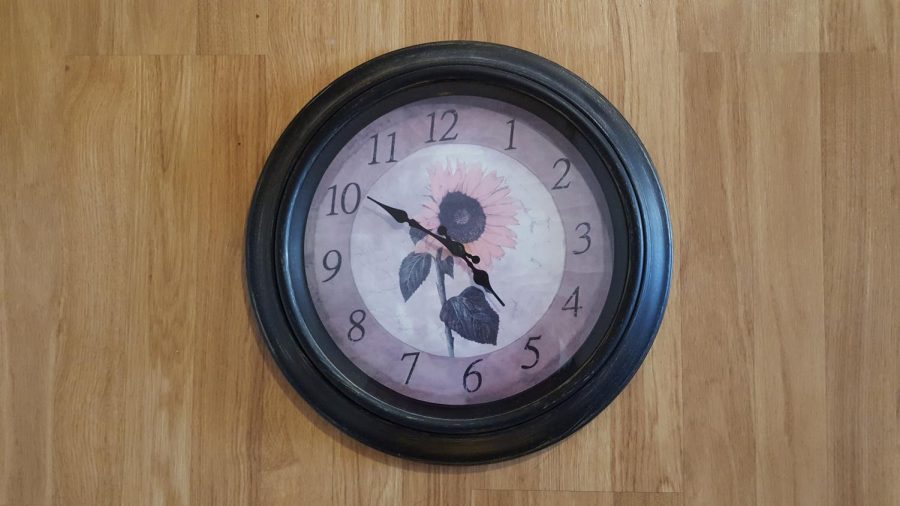Daylight saving time: What, why and when
November 8, 2017
This year’s daylight saving time began on Mar. 13, when people set their clocks forward an hour, and ended on Sunday, Nov. 5, when people did the opposite.
Daylight saving time (DST) is the practice of setting time forward an hour so there can be more daylight in the evenings and less in the mornings. The period of time lasted for seven months this year.
Students perceive DST as simply as a loss or gain of an hour of sleep, but there is more to the semi-annual event than most people know.
“I like daylight saving time because I feel like you can do more things,” Allison Yen (10) said. “You’re not going to be as tired because it doesn’t get dark.”
In addition to the angle of the Earth’s tilt, DST is a contributing factor to why days are longer in the summer. Now that DST has ended, there is more daylight in the mornings and less in the afternoons. People can expect the sun to set and the moon to rise much earlier, which is why some like Annie Ma (10) take a different stance on the topic.
“I like it in the spring, but not [in November] because it gets super dark super early,” Annie said. “It feels like the day’s already over and I haven’t done anything.”
Benjamin Franklin first suggested the idea of conserving daylight in 1784. By setting clocks back by an hour, days seemed to become longer, and people could take advantage of the extra evening daylight rather than using energy on lighting. DST did not officially begin until 150 years later, when Germany established it in 1916.
Some 40 percent of the world’s countries do not use DST. The other 60 percent acknowledge that, due to Earth’s angular movement on its axis, days are shorter during the winter season. The U.S. is one of the countries that takes advantage of the natural daylight in the afternoons.
DST in 2018 starts on March 11 and ends on November 4.


















![“[Building nerf blasters] became this outlet of creativity for me that hasn't been matched by anything else. The process [of] making a build complete to your desire is such a painstakingly difficult process, but I've had to learn from [the skills needed from] soldering to proper painting. There's so many different options for everything, if you think about it, it exists. The best part is [that] if it doesn't exist, you can build it yourself," Ishaan Parate said.](https://harkeraquila.com/wp-content/uploads/2022/08/DSC_8149-900x604.jpg)




![“When I came into high school, I was ready to be a follower. But DECA was a game changer for me. It helped me overcome my fear of public speaking, and it's played such a major role in who I've become today. To be able to successfully lead a chapter of 150 students, an officer team and be one of the upperclassmen I once really admired is something I'm [really] proud of,” Anvitha Tummala ('21) said.](https://harkeraquila.com/wp-content/uploads/2021/07/Screen-Shot-2021-07-25-at-9.50.05-AM-900x594.png)







![“I think getting up in the morning and having a sense of purpose [is exciting]. I think without a certain amount of drive, life is kind of obsolete and mundane, and I think having that every single day is what makes each day unique and kind of makes life exciting,” Neymika Jain (12) said.](https://harkeraquila.com/wp-content/uploads/2017/06/Screen-Shot-2017-06-03-at-4.54.16-PM.png)








![“My slogan is ‘slow feet, don’t eat, and I’m hungry.’ You need to run fast to get where you are–you aren't going to get those championships if you aren't fast,” Angel Cervantes (12) said. “I want to do well in school on my tests and in track and win championships for my team. I live by that, [and] I can do that anywhere: in the classroom or on the field.”](https://harkeraquila.com/wp-content/uploads/2018/06/DSC5146-900x601.jpg)
![“[Volleyball has] taught me how to fall correctly, and another thing it taught is that you don’t have to be the best at something to be good at it. If you just hit the ball in a smart way, then it still scores points and you’re good at it. You could be a background player and still make a much bigger impact on the team than you would think,” Anya Gert (’20) said.](https://harkeraquila.com/wp-content/uploads/2020/06/AnnaGert_JinTuan_HoHPhotoEdited-600x900.jpeg)

![“I'm not nearly there yet, but [my confidence has] definitely been getting better since I was pretty shy and timid coming into Harker my freshman year. I know that there's a lot of people that are really confident in what they do, and I really admire them. Everyone's so driven and that has really pushed me to kind of try to find my own place in high school and be more confident,” Alyssa Huang (’20) said.](https://harkeraquila.com/wp-content/uploads/2020/06/AlyssaHuang_EmilyChen_HoHPhoto-900x749.jpeg)






